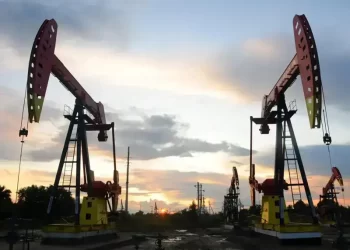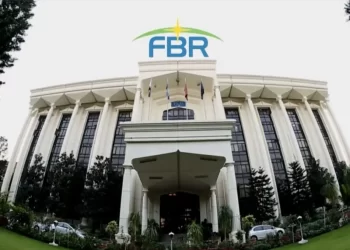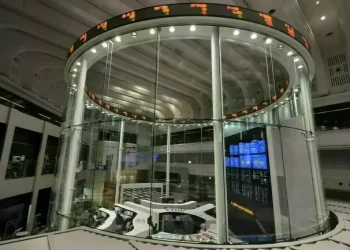SINGAPORE: Asian spot liquefied natural gas (LNG) gained for the first time since end-August this week, supported by emerging spot demand across the region.
The average LNG price for December delivery into north-east Asia rose to $13.50 per million British thermal units (mmBtu), industry sources estimated, its first weekly gain in six weeks.
“Active buyers in the current spot buyers are primarily from South and Southeast Asia… Some Japanese players have also entered the market for LNG procurement for December deliveries,” said Siamak Adibi, director for gas and LNG supply analytics at consultancy FGE.
Despite the spot market activity, overall market sentiment has not changed dramatically, added Adibi, as European gas storage levels remain above 95%, reducing competition with Asia for cargo procurement.
“The prompt market sentiment remains bearish for now.”
Recent tenders include one from Thailand’s Hin Kong Power, B.Grimm Power and state-controlled PTT, all for cargoes delivered in December, said a Rystad Energy report.
Global LNG: Asian spot LNG slips on tepid demand, ample supply
“With Thailand’s monsoon season typically ending in October, reduced rainfall may mean less hydropower generation going forward, resulting in an increased reliance on gas-fired generation.”
The report added that Northeast Asian players are likely to see a slow start to the heating season as temperatures remain warmer than normal in the period leading up to the start of winter, while healthy storage levels could mute spot purchases from the region.
In Europe, S&P Global Commodity Insights assessed its daily North West Europe LNG Marker (NWM) price benchmark for cargoes delivered in December on an ex-ship (DES) basis at $12.539/mmBtu on Oct. 17, a $0.175/mmBtu discount to the December gas price at the Dutch TTF hub.
Argus assessed the price for December delivery at $12.50/mmBtu, while Spark Commodities assessed the price for November delivery at $12.332/mmBtu.
“High storage and steady output could see prices fall back significantly over winter in the event of mild weather like that of the last two years,” said Alex Froley, senior LNG analyst at ICIS, adding that U.S. supply is also improving with Cove Point returning from planned maintenance and Hurricane Milton not affecting LNG production.
“However, uncertainty over the Middle East conflict and U.S. elections and the ongoing weather risk at this early stage of the season could see people reluctant to move too far yet.”
In LNG freight, Atlantic prices dropped to $26,750/day on Friday, its largest week-on-week drop since January, said Spark Commodities analyst Qasim Afghan.
Pacific rates also declined, easing for a tenth straight week, to $42,250/day.
SINGAPORE: Asian spot liquefied natural gas (LNG) gained for the first time since end-August this week, supported by emerging spot demand across the region.
The average LNG price for December delivery into north-east Asia rose to $13.50 per million British thermal units (mmBtu), industry sources estimated, its first weekly gain in six weeks.
“Active buyers in the current spot buyers are primarily from South and Southeast Asia… Some Japanese players have also entered the market for LNG procurement for December deliveries,” said Siamak Adibi, director for gas and LNG supply analytics at consultancy FGE.
Despite the spot market activity, overall market sentiment has not changed dramatically, added Adibi, as European gas storage levels remain above 95%, reducing competition with Asia for cargo procurement.
“The prompt market sentiment remains bearish for now.”
Recent tenders include one from Thailand’s Hin Kong Power, B.Grimm Power and state-controlled PTT, all for cargoes delivered in December, said a Rystad Energy report.
Global LNG: Asian spot LNG slips on tepid demand, ample supply
“With Thailand’s monsoon season typically ending in October, reduced rainfall may mean less hydropower generation going forward, resulting in an increased reliance on gas-fired generation.”
The report added that Northeast Asian players are likely to see a slow start to the heating season as temperatures remain warmer than normal in the period leading up to the start of winter, while healthy storage levels could mute spot purchases from the region.
In Europe, S&P Global Commodity Insights assessed its daily North West Europe LNG Marker (NWM) price benchmark for cargoes delivered in December on an ex-ship (DES) basis at $12.539/mmBtu on Oct. 17, a $0.175/mmBtu discount to the December gas price at the Dutch TTF hub.
Argus assessed the price for December delivery at $12.50/mmBtu, while Spark Commodities assessed the price for November delivery at $12.332/mmBtu.
“High storage and steady output could see prices fall back significantly over winter in the event of mild weather like that of the last two years,” said Alex Froley, senior LNG analyst at ICIS, adding that U.S. supply is also improving with Cove Point returning from planned maintenance and Hurricane Milton not affecting LNG production.
“However, uncertainty over the Middle East conflict and U.S. elections and the ongoing weather risk at this early stage of the season could see people reluctant to move too far yet.”
In LNG freight, Atlantic prices dropped to $26,750/day on Friday, its largest week-on-week drop since January, said Spark Commodities analyst Qasim Afghan.
Pacific rates also declined, easing for a tenth straight week, to $42,250/day.









